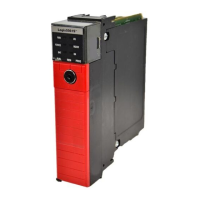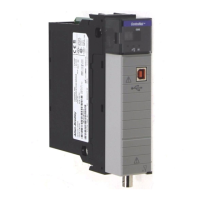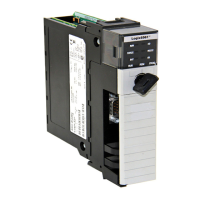
Do you have a question about the Allen-Bradley 1756-M02AE and is the answer not in the manual?
| Series | 1756 |
|---|---|
| Module Type | Motion Control |
| Input Voltage | 24V DC |
| Number of Axes | 2 |
| Number of Channels | 2 |
| Communication Protocol | Ethernet/IP |
| Operating Temperature | 0 to 60 °C |
| Module Location | ControlLogix chassis |
| Compatibility | 1756 chassis |
Explains safety symbols like WARNING, ATTENTION, and hazard labels for safe operation.
Step-by-step guide on how to create a new coordinate system tag in the Logix Designer.
Instructions for modifying an existing Coordinate System or configuring its properties.
Guidelines for configuring Cartesian coordinate systems with or without orientation support.
Using multi-axis instructions for linear/circular moves in Cartesian systems without orientation.
Using instructions for Cartesian moves on robots with orientation control.
Guidelines for configuring Articulated Independent robots without orientation support.
Defines the Cartesian coordinate frame, origin, and primary axes for articulated robots.
Explains methods to establish a reference frame for articulated dependent robots.
Configures robots for varying reach and payload capacities, including link lengths and offsets.
Guidelines for configuring Articulated Dependent robots, which have base and elbow motors.
Defines the Cartesian coordinate frame, origin, and primary axes for articulated dependent robots.
Guidance for configuring a four-axis Delta robot for 3D Cartesian space movement.
Locates the reference frame at the top fixed plate for Delta geometries.
Steps to calibrate the robot using angle values and position/home instructions.
Configures robots for varying reach and payload capacities, including link lengths and offsets.
Guidance for configuring a two-dimensional Delta robot for 2D Cartesian space movement.
Locates the reference frame at the center of the fixed top plate for 2D Delta geometries.
Calibrates the robot using angle values and reference position establishment.
Configures robots for varying reach and payload capacities, including link lengths and offsets.
Guidelines for configuring SCARA Delta robots, similar to 2D Delta but with tilted X1-X2 plane.
Locates the reference frame at the base of link L1 for SCARA Independent geometries.
Configures robots for varying reach and payload capacities, focusing on link lengths.
Guidelines for configuring Cartesian Gantry robots.
Defines the orthogonal set of X1, X2, X3 axes positioned anywhere on the robot.
Guidelines for configuring Cartesian H-bot robots, special type of two-axis gantry.
Redefines the robot origin from a new work frame using XYZRxRyRz coordinates.
Defines the tool frame at TCP from the EOA frame using XYZRxRyRz coordinates.
Illustrates establishing a new Tool frame from the EOA frame and end position.
Configures a three-axis Delta robot for 3D Cartesian (X, Z, Rz) space movement.
Establishes base and end of arm frames for the Delta J1J2J6 robot.
Steps to calibrate the robot using angle values and scaling parameters.
Configures robots for varying reach and payload capacities, including link lengths and offsets.
Configures a five-axis Delta robot for six-dimensional Cartesian space movement.
Establishes base and end of arm frames for the Delta J1J2J3J4J5 robot.
Steps to calibrate the five-dimensional robot using angle values and scaling.
Configures robots for varying reach and payload capacities, including link lengths and offsets.
Illustrates Ry moves using absolute position and its effect on mirror image.
Explains how to use MCTO instruction to establish transforms and program turns counters.
Illustrates moving the robot coordinate system to an initial position before enabling transformation.
Illustrates setting up Master Driven Speed Control and jogging the master axis.
Enables the transform instruction between Cartesian and Delta robot systems.
Commands robot to move to target points using MCPM path data and turns counter specifications.
Defines target position and orientation with XYZRxRyRz coordinates for MCPM.











